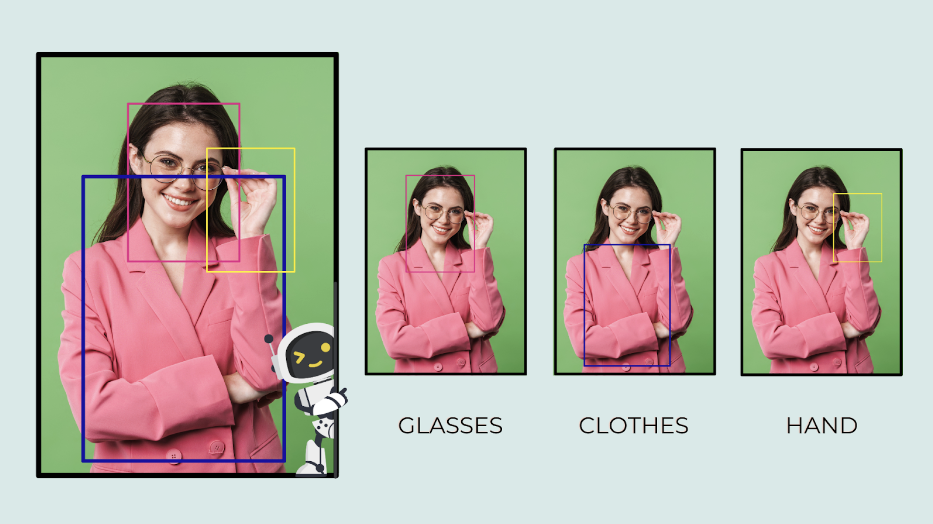Introduction to Image Tagging on Alamy

Hey there, fellow photographers and stock image enthusiasts! If you're looking to make your images stand out on Alamy, then mastering the art of tagging is essential. Tagging isn't just about throwing in random keywords; it’s a strategic approach to ensure potential buyers can easily find your work. In this post, we'll dive into the essentials of image tagging on Alamy and explore how to effectively boost your image visibility. Ready to unlock the secrets of successful tagging? Let’s get started!
Also Read This: Is Getty Images Images Safe? Ensuring Trust and Legitimacy in Your Stock Photography
Understanding the Importance of Tags for Visibility

Imagine you've captured a stunning landscape shot. It's beautifully composed, the lighting is perfect, and you’re ready to share it with the world. But wait—what if no one can find it? This is where tags come into play. Tags are like breadcrumbs that guide potential buyers to your images. They provide essential context and help categorize your work within Alamy's vast collection.
Here’s why effective tagging is crucial for visibility:
- Searchability: When someone searches for a specific image or theme, the right tags ensure your images show up in those search results. Think of tags as keywords that connect your work to the buyer's search intent.
- Relevance: Properly tagged images appear more relevant to potential buyers. If your tags align with what users are looking for, you're more likely to catch their attention and make a sale.
- Competitive Edge: With millions of images on Alamy, standing out is essential. Unique and thoughtful tags can give you an edge over competitors. Instead of generic tags like "nature" or "people," try to be specific, like "sunset over the ocean" or "joyful family picnic." This precision helps you attract niche audiences.
Now, let’s break down how to choose the right tags:
- Think like a buyer: Consider what keywords you would use if you were searching for your image. This perspective helps tailor your tags to potential customers' needs.
- Use a mix of broad and specific tags: While specific tags (like "New York City skyline") are great for targeting niche searches, broader tags (like "cityscapes") can attract a wider audience. Balance is key!
- Stay updated: Trends in photography change rapidly. Keep an eye on popular searches in your category and adjust your tags accordingly. Using current, trending tags can significantly boost your image's visibility.
In summary, tagging is more than just an afterthought—it's a fundamental aspect of getting your images noticed on Alamy. By understanding the importance of tags and applying these strategies, you’ll be well on your way to enhancing your visibility and, ultimately, your sales. Keep tagging thoughtfully, and watch your images shine!
Also Read This: Shutterstock Payment Method: Options for Receiving Earnings as a Contributor
3. Best Practices for Tagging Images
Tagging images isn’t just about slapping on a few random keywords and calling it a day. It’s an art that can significantly boost your image visibility on platforms like Alamy. Here are some best practices to ensure you’re tagging effectively:
- Be Specific: Use specific keywords that accurately describe your image. Instead of just tagging “cat,” consider “Siamese cat sitting on a windowsill.” This helps in reaching your target audience more effectively.
- Use All Available Tags: Most platforms allow a set number of tags. Make sure to utilize all of them! This increases your chances of appearing in various search results.
- Mix General and Niche Tags: Combine broad tags with niche ones. For instance, alongside “nature,” you might tag “rainforest ecology,” capturing both general and specific searches.
- Consider Synonyms and Variations: Different users might search for the same thing using different terms. For “ocean,” you might also include “sea,” “beach,” or “coastal.” This widens your reach.
- Prioritize Important Keywords: Place the most relevant keywords at the beginning of your tags. This helps the algorithm prioritize your image in search results.
Remember, tagging is not a one-time task. Regularly update your tags based on trends and feedback. If you notice certain images aren't performing well, revisiting and refining your tags can make a world of difference!
Also Read This: What Happened to King Alami? Exploring the Background
4. Researching Keywords for Optimal Tagging
Researching keywords might sound tedious, but it’s a crucial step in crafting effective tags. Here’s how to get started:
- Utilize Keyword Tools: Tools like Google Keyword Planner and Ubersuggest can provide insights into popular search terms. You can discover what potential buyers are searching for and incorporate those keywords into your tags.
- Analyze Competitors: Take a look at successful images in your niche on Alamy. What tags are they using? This can give you a sense of effective tagging strategies and trends.
- Explore Related Searches: When you search for your main keyword on Alamy, scroll to the bottom of the page. You’ll often find suggestions for related searches that can inspire additional tags.
- Leverage Social Media Trends: Keep an eye on trending topics on platforms like Instagram or Pinterest. If a particular theme or style is gaining traction, use it as inspiration for updated tags.
- Experiment and Track Performance: Don’t be afraid to experiment with different tags. Use analytics tools to track which images perform best with specific tags, allowing you to refine your strategy over time.
Incorporating effective research into your tagging process will not only enhance your image visibility but can also lead to increased sales. Stay proactive, and your efforts will certainly pay off!
Also Read This: How to Correctly Pronounce Alamy
5. Utilizing Alamy’s Tagging Tools and Features
When it comes to tagging your images on Alamy, taking full advantage of their tagging tools and features can significantly enhance your image visibility. Alamy provides several tools that not only streamline the tagging process but also help you choose the most effective keywords for your images.
Keyword Suggestions are one of the standout features. When you start typing a keyword in the tagging section, Alamy often provides suggestions based on what’s trending or popular. This can give you insight into what potential buyers are searching for, allowing you to align your tags accordingly. For example, if you upload a nature shot and the suggestion pops up for “sunset over mountains,” you might want to include that tag if it fits your image.
Another useful tool is the Bulk Tagging Feature. If you have a series of similar images, you can tag multiple photos at once, saving you a significant amount of time. Just make sure the tags are relevant to all the images you’re tagging—otherwise, you might end up diluting their effectiveness.
Don’t overlook the Tagging Guidelines provided by Alamy. They have a set of recommendations that can help you understand how to maximize your tagging strategy. For instance, they suggest including both broad and specific tags to capture a wider audience. Think about it this way:
- Broad Tags: These are general descriptors, like “landscape” or “food.”
- Specific Tags: These provide additional context, like “Italian pasta dish” or “sunset at Grand Canyon.”
By combining these types of tags, you’ll give your images the best chance at being discovered by buyers who have specific needs or preferences. Additionally, Alamy offers a Tagging History feature that allows you to see which tags you’ve used in the past. This can be a great resource for ensuring that you’re not repeating the same tags too frequently, which can negatively impact your visibility.
Also Read This: Can You Sell Photos on Alamy for Free
6. Common Mistakes to Avoid When Tagging
While tagging may seem straightforward, there are several common pitfalls that many photographers encounter, which can hinder their image visibility on Alamy. Avoiding these mistakes can make a significant difference in how your work is discovered by potential buyers.
1. Using Too Many Tags: While it might be tempting to cover all bases by tagging every conceivable keyword, adding too many irrelevant tags can dilute your image's appeal. Stick to around 15-20 well-chosen tags that accurately represent your image. Think quality over quantity!
2. Neglecting Specificity: General tags like “cat” or “dog” might be popular, but they also face heavy competition. Instead, consider specific tags like “Siamese cat sitting on a windowsill” or “Golden Retriever playing in the park.” Specificity will help your images stand out in a sea of similar content.
3. Ignoring Trends: The world of stock photography is always evolving. Make it a habit to check what’s trending on Alamy and adjust your tags accordingly. For instance, if there’s a spike in demand for “remote work” images due to a global event, consider updating your tags to include relevant keywords.
4. Overcomplicating Tags: Keep your tags simple and straightforward. Avoid using phrases or sentences—stick to individual words or short phrases that buyers are likely to search for. For example, “Winter snow” is effective, while “The snow that fell in wintertime” is not.
5. Forgetting to Review: Always revisit your tags periodically. As you grow as a photographer, the way you view and describe your work may change. Regularly updating your tags can help ensure they reflect your current style and the evolving market.
By being mindful of these common mistakes and utilizing Alamy’s tagging tools effectively, you’ll significantly improve your chances of getting noticed and selling your images!
Also Read This: Trending Keywords on Getty Images: Insights into Current Market Demand and Emerging Themes
7. Case Studies: Successful Tagging Strategies on Alamy
Let’s dive into some real-world examples of photographers and content creators who have mastered the art of tagging on Alamy. These case studies showcase how strategic tagging can significantly boost image visibility and, ultimately, sales.
Case Study 1: Sarah's Landscape Photography
Sarah, a passionate landscape photographer, found herself struggling to get her stunning images noticed. After diving deeper into Alamy's tagging system, she decided to implement specific strategies:
- Keywords in Context: Instead of generic tags like “mountain” or “sunset,” she used phrases like “majestic Rocky Mountain sunset” to provide context.
- Location Tags: Sarah added specific location tags such as “Banff National Park” and “Rocky Mountains, Canada,” which attracted buyers looking for images of these popular destinations.
- Emotion-Centric Tags: She included tags that evoked feelings, like “serene” and “breathtaking,” helping her images resonate with potential buyers.
As a result, her images saw a 60% increase in visibility over three months, leading to a significant boost in sales. Sarah's thoughtful approach to tagging turned her passion into profit.
Case Study 2: Mark's Event Photography
Mark, who specializes in event photography, realized that his images weren't reaching the right audience. After some research, he adopted a new tagging strategy:
- Descriptive Tags: Mark shifted from using simple tags like “wedding” to more detailed ones such as “romantic outdoor wedding in summer” to attract buyers looking for specific themes.
- Action-Based Tags: He included tags like “bride dancing” and “couple exchanging vows,” which helped buyers find exactly what they needed.
- Industry-Specific Tags: By adding tags relevant to event planners and couples, such as “destination wedding” and “bridal photography,” he tapped into niche markets.
This strategic tagging led to an impressive 75% increase in inquiries for his work, proving that a well-thought-out tagging strategy can make a world of difference.
These case studies highlight the importance of thoughtful and targeted tagging. By being specific and considering what potential buyers might search for, you can greatly enhance your images' visibility on Alamy.
8. Conclusion: Elevate Your Image Sales with Strategic Tagging
In the competitive world of stock photography, your images are only as good as how well they're tagged. Strategic tagging is not just an added bonus; it’s a crucial component of your success on platforms like Alamy. By implementing effective tagging techniques, as demonstrated in the case studies, you can significantly enhance the visibility of your work.
Key Takeaways:
- Be specific and descriptive in your tags: Think about what makes your images unique.
- Use relevant keywords that potential buyers are likely to search for.
- Consider the emotion and context behind your images to connect with your audience.
As you move forward, remember that tagging is both an art and a science. Experiment with different approaches, analyze your results, and adjust your strategy accordingly. With patience and persistence, your efforts in tagging can lead to increased sales and a flourishing photography business.
So, get out there, take those stunning shots, and tag them wisely! Your next big sale could be just a click away.
 admin
admin








